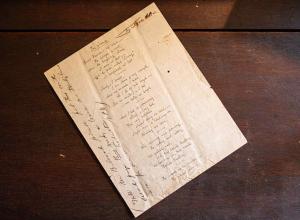February 2014 |
Possible Mexican Origin for the Voynich Manuscript
The Voynich Manuscript made a brief appearance in recorded history in the late 16th century when Emperor Rudolph II paid 600 gold ducats for it. The manuscript then disappeared for several centuries before re-appearing at the Villa Mondragone near Rome in 1912 where antiquarian bookseller Wilfrid Voynich purchased it.
Although the manuscript has long thought to be of European origin, two botanists - Arthur Tucker and Rexford Talbert - studied the plant illustrations in the manuscript and noticed something odd. They were struck by the similarity between the "soap plant" of the 1552 Codex Cruz-Badianus (commonly known as the "Aztec Herbal") and a plant depicted in the Voynich Manuscript. Using the soap plant as a starting point, the botanists examined the remaining 302 plants depicted in the Voynich Mss., concluding that 37 of the plans were possibly of central American origin.
Tucker and Talbert then moved on to examine the text. Their conclusion? The text that has long confused and baffled scholars may actually be an extinct dialect of Nahuatl from central Mexico, possibly Morelos or Puebla.
Tucker and Talbert synthesized their findings in their article "A Preliminary Analysis of the Botany, Zoology, and Mineralogy of the Voynich Manuscript,"proposing a possible Mexican origin for the mysterious manuscript. They emphasized in their paper that their conclusions were not definitive and that "much, much more work needs to be done, and hypotheses will be advanced for years."
[Image from Wikipedia]
















